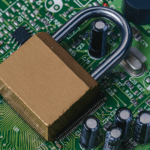FPGA Insights has engaged in an exclusive interview with John Bagshaw

Q1) Can you provide an overview of your experience with FPGA design projects mentioning a few that you’ve worked on, starting with a brief introduction?
John Bagshaw is a seasoned SoC/FPGA engineer with a comprehensive background in hardware design and software development. He specializes in FPGA-based design and development, having worked on pivotal projects such as the design of an FPGA-based radio and receiver for satellite detection and a DSP module for ultrasound detection applicable in healthcare systems.
Additionally, he has expertise in software development, hardware/software integration, mentorship, and project management. John is adept at modifying software to rectify errors and adapt to new hardware, integrating object-oriented design and development techniques, and addressing hardware and software integration issues. He also serves as a mentor to junior and intermediate engineers and manages engineering projects, ensuring timely and under budget delivery.
Currently, he is pursuing a Ph.D. in Earth and Space Science and Engineering at York University, Canada, and holds several certifications, including Designing with the IP Integrator Tool from Xilinx and System Design Using Verilog. He recently developed a single perceptron IP in his quest towards an AI-based IP bank for FPGA designs. He was also recently ranked top 10% of C++ Software Engineer by Testdome
Q2) Can you explain the benefits of using FPGAs over other types of processors?
Field-Programmable Gate Arrays (FPGAs) are a fascinating choice for many applications due to their unique characteristics and advantages. They are essentially a blank canvas that can be configured to implement virtually any digital function, making them incredibly flexible and adaptable. The key characteristics and advantages of FPGAs are:
Reconfigurability
FPGAs are incredibly flexible and adaptable because they can be configured to implement virtually any digital function. If a design needs to be modified or updated, the
FPGA can simply be reprogrammed, even after it has been deployed in the field. This makes them an attractive option for applications that require frequent updates or modifications.
Parallelism
One of the most powerful features of FPGAs is their inherent ability to perform parallel processing. Unlike traditional processors that execute instructions sequentially, FPGAs can perform many operations simultaneously. This is because an FPGA consists of an array of programmable logic blocks and interconnects, which can be configured to operate concurrently. This is a huge advantage for applications that require real-time processing or have high data throughput requirements.
Speed and Performance
Since FPGAs allow for custom-tailored hardware solutions, they can offer superior speed and performance for certain applications. While a general-purpose processor must execute a series of instructions to perform a task, an FPGA can be configured to perform that same task directly in hardware, which can lead to significant speed improvements.
Energy Efficiency
FPGAs can be optimized to consume less power compared to general-purpose processors. This is because FPGAs can be configured to include only the necessary logic elements required for a specific application, eliminating the overhead associated with general-purpose processors. This makes FPGAs an attractive option for battery-powered or energy-sensitive applications.
Customization and IP Integration
FPGAs provide a high level of customization, allowing designers to create specialized hardware tailored to their specific application. This includes the ability to integrate proprietary or third-party intellectual property (IP) cores directly into the FPGA, enabling the creation of highly customized and differentiated solutions.
Prototyping and Proof-of-Concept Development
FPGAs are ideal for prototyping and proof-of-concept development because they allow designers to quickly iterate and test their designs in hardware. This can lead to faster time-to-market and lower development costs.
Longevity and Obsolescence Management
Unlike microcontrollers and microprocessors, which may become obsolete over time, the logic design implemented in an FPGA can be migrated to a new FPGA device if necessary. This can be crucial for applications that require long product lifecycles.
Security
FPGAs can provide a higher level of security compared to software-based solutions. For example, critical functions or algorithms can be implemented directly in hardware, making them less susceptible to certain types of attacks, such as buffer overflows.
Drawbacks
While FPGAs offer a multitude of advantages, they also have some drawbacks that need to be considered. The development effort required to create and optimize an FPGA design can be significant and may require specialized skills and tools. Additionally, the upfront costs associated with FPGAs can be higher compared to off-the-shelf processors. However, for many applications, the benefits of FPGAs, such as their flexibility, performance, and energy efficiency, make them a compelling choice.
Q3) What are the most significant trends observed in the FPGA industry over the past year? How will these trends shape the industry’s future?
The FPGA (Field-Programmable Gate Array) industry has been a critical player in the technological advancements of recent years. FPGAs, known for their parallel processing capabilities and customizable hardware, have found applications in various fields, from AI and machine learning to edge computing and 5G technology. Let’s explore some of the notable trends in the FPGA industry over the past year and discuss how they are likely to shape its future:
AI and Machine Learning
There has been a significant increase in the use of FPGAs for AI and machine learning applications. The computation-intensive tasks associated with AI and machine learning require powerful processing capabilities, and FPGAs, with their parallel processing and customizable hardware, are well-suited for this purpose. More companies are leveraging the power of FPGAs to develop innovative AI and machine learning solutions, a trend expected to continue in the coming years.
Edge Computing
As the need for real-time data processing at the edge increases, so does the demand for FPGAs. Edge computing applications require high-speed data processing with low power consumption, making FPGAs an ideal choice. This is especially important in applications like IoT (Internet of Things), where devices need to process data locally to reduce latency and minimize the amount of data sent to the cloud.
5G Technology
The rollout of 5G networks has led to an increased demand for FPGAs. FPGAs play a crucial role in 5G infrastructure by enabling high-speed data processing and flexible hardware configurations. As 5G technology continues to evolve and expand, the demand for FPGAs is expected to grow accordingly. It’s logical to say that FPGA-based prototyping for 6G technology is underway.
Automotive Applications
The automotive industry is embracing FPGAs for applications such as Advanced Driver Assistance Systems (ADAS) and autonomous vehicles. FPGAs offer the processing power, flexibility, and low latency required for these critical applications.
Customizable System-on-Chip (SoC) Solutions
There is a growing trend towards integrating FPGAs with other components, such as processors and memory, to create customizable SoC solutions. This approach allows
designers to develop highly optimized and application-specific hardware, which can lead to improved performance and efficiency.
Cloud Computing
More and more cloud service providers are using FPGAs to accelerate data processing in their data centers. FPGAs can be used to offload computation-intensive tasks from the server’s CPU, which can lead to improved performance and lower power consumption.
Security
With the rise in cyberattacks, there is an increased focus on security in the FPGA industry. FPGAs are being used to implement hardware-based security features, such as secure boot and encryption, which can provide a higher level of protection compared to software-based solutions.
Q4) How do you see FPGA development evolving to meet the demands of modern applications and complex workloads?
Field Programmable Gate Arrays (FPGAs) have come a long way since their inception as simple glue logic devices. Today, they are highly complex and capable components, indispensable in many modern applications. The evolution of FPGAs has been driven by the increasing complexity of modern applications and workloads, which require more computational power and functionality. This has led to the development of FPGAs with higher densities, more logic elements, and higher performance.
Modern applications demand more computational power and functionality. To meet these demands, FPGAs have evolved to offer higher densities, more logic elements, and higher performance. For example, newer FPGAs now come with integrated multi-core processors, high-speed transceivers, and advanced memory interfaces. This allows them to handle more complex workloads, while also offering higher performance and greater flexibility.
Enhancements in AI and machine learning are driving the development of new FPGA architectures optimized for these workloads. These include FPGAs with specialized DSP blocks, integrated AI cores, and support for popular machine learning frameworks. These advancements allow FPGAs to efficiently handle the computation-intensive tasks associated with AI and machine learning, making them a viable option for these applications.
In the early days of FPGA development, the tools were often complex and difficult to use. However, as the demand for FPGAs has grown, so too needs more user-friendly development tools. FPGA vendors are now providing more intuitive design environments, with better graphical interfaces, more powerful simulation tools, and easier-to-use IP integration capabilities. This makes it easier for designers to develop and optimize their FPGA designs, even if they are not FPGA experts.
Traditionally, FPGAs have been programmed using hardware description languages (HDLs) like VHDL and Verilog. However, there is a growing trend towards using high-level programming languages, such as C and Python, to program FPGAs. This makes FPGA development more accessible to software engineers and allows for faster development cycles.
As applications become more mobile and energy-conscious, there is a greater emphasis on power efficiency in FPGA development. This is driving the development of new low-power FPGA architectures, as well as tools and techniques for optimizing power consumption in FPGA designs.
With the increasing prevalence of cyberattacks, security has become a top priority in FPGA development. Newer FPGAs come with built-in security features, such as secure boot, hardware-based encryption, and tamper detection. These features help to protect sensitive data and ensure the integrity of the FPGA design.
Cloud computing has revolutionized many aspects of technology, and FPGA development is no exception. Cloud-based FPGA development platforms are now available, allowing designers to develop, simulate, and test their FPGA designs in the cloud. This provides access to powerful computing resources, without the need for expensive hardware and software.
The FPGA development landscape is evolving rapidly to meet the demands of modern applications and complex workloads. With advancements in FPGA architectures, development tools, programming languages, and cloud computing, FPGAs are becoming more powerful, flexible, and accessible. As a result, they are playing a crucial role in enabling the next generation of innovative applications and technologies.
Q5) Key drivers behind the increasing adoption of FPGAs in various applications and industries?
In recent years, there has been a significant increase in the adoption of Field Programmable Gate Arrays (FPGAs) across various applications and industries. Some key drivers behind the adoption of FPGAs are:
Adaptability
FPGAs are incredibly versatile and can be reprogrammed to suit different applications, even after they have been deployed. This adaptability is invaluable in today’s fast-paced world, where the ability to pivot and adapt to new challenges is crucial.
Parallel Processing
The parallel processing capabilities of FPGAs make them ideal for applications that require real-time processing or handling large amounts of data simultaneously. This is particularly important in areas like telecommunications, image processing, and financial trading.
Performance
FPGAs can be customized to create highly optimized and application-specific hardware solutions, which often results in superior performance compared to general-purpose processors. This is especially important in applications that require high-speed processing, such as radar systems and data centers.
Energy Efficiency
FPGAs can be optimized for specific applications, resulting in lower power consumption compared to general-purpose processors. This is especially important in portable and battery-powered devices, as well as in data centers where energy costs are a significant concern.
Rapid Prototyping
FPGAs allow for quick prototyping and testing of new designs, which can lead to faster development cycles and reduced time-to-market. This is crucial in industries where technology is evolving rapidly, and there is pressure to bring new products to market quickly.
Long-Term Availability
The design implemented in an FPGA can be migrated to a new FPGA device if necessary, which is important for applications with long product lifecycles, such as aerospace and industrial control systems.
Security
Implementing critical functions directly in hardware makes FPGAs less susceptible to certain types of cyber-attacks compared to software-based solutions. This is particularly important in applications where security is of utmost concern, such as military and financial systems.
Integration of Custom IP
FPGAs allow for the integration of custom intellectual property (IP), enabling the creation of highly customized and differentiated solutions. This is particularly important in competitive industries where there is a need for specialized functionality.
Overall, the adaptability, performance, and energy efficiency of FPGAs, coupled with the ability to rapidly prototype and integrate custom IPs, make them an attractive option for a wide range of applications and industries. As technology continues to evolve, and the demands of modern applications become increasingly complex, and the adoption of FPGAs is expected to continue to grow.
Q6) Sectors that stand to benefit the most from FPGA integration, and why?
Owing to several years of experience working with FPGAs, I’ve identified several sectors that stand to reap significant benefits from FPGA integration, some of which are:
Telecommunications
The telecommunications sector is perpetually tasked with managing ever-increasing data loads at lightning-fast speeds. Modern telecommunication systems demand high data rates and real-time processing, which FPGAs, with their parallel processing capabilities and reprogrammability, are perfectly suited to handle. By implementing FPGAs, telecommunications companies can enhance their network performance, reduce latency, and ultimately improve the user experience.
Automotive
Today’s vehicles are technological marvels, equipped with advanced driver-assistance systems (ADAS), autonomous driving features, and sophisticated infotainment systems. These intricate systems require flexible architecture and robust performance to adhere to the strict safety and reliability standards of the automotive industry. FPGAs, with their flexible architecture and robust performance, are key to implementing these systems while ensuring safety and reliability.
Aerospace and Defense
In the aerospace and defense sector, the need for high-performance, reliable, and secure systems is paramount. FPGAs, which can be customized for specific applications, fulfill these requirements while also offering the adaptability necessary to address evolving challenges and threats. By integrating FPGAs into their systems, aerospace and defense organizations can enhance their capabilities while ensuring security and reliability.
Medical Imaging
Medical imaging systems necessitate the high-speed processing of substantial amounts of data in real time. FPGAs, with their capacity for parallel processing and application-specific optimization, are perfectly suited to implement the complex algorithms required in medical imaging. This enables healthcare professionals to obtain accurate and timely images, ultimately improving patient diagnosis and treatment.
Data Centers
Modern data centers demand high-performance, energy-efficient hardware to manage the vast quantities of data being processed and stored. FPGAs, customizable for specific applications, deliver the performance and energy efficiency essential for today’s data centers. By integrating FPGAs into their infrastructure, data centers can enhance their performance while reducing energy consumption and operational costs.
Industrial Automation
Real-time processing and control are critical in industrial automation systems. FPGAs, capable of handling multiple tasks concurrently and known for their deterministic nature, are ideal for implementing the control algorithms required in industrial automation. This enables industries to optimize their processes, improve efficiency, and ultimately increase productivity.
Financial Services
The financial services sector requires the rapid processing of vast amounts of data for applications such as trading and risk analysis. FPGAs, with their high performance and customization capabilities, are perfectly suited for these applications. By integrating FPGAs into their systems, financial institutions can enhance their trading and risk analysis capabilities, ultimately improving their decision-making and financial performance.
As discussed, several sectors stand to benefit enormously from FPGA integration due to their flexibility, performance, and application-specific optimization capabilities. As technology continues to advance, it is anticipated that the adoption of FPGAs in these and other sectors will only continue to grow.
Q7) The role of FPGAs in accelerating AI applications and advancements expected in the near future.
FPGAs have a critical role in accelerating AI applications, and their significance will only continue to grow as AI technology evolves. Here’s why:
The Importance of Parallel Processing in AI
AI applications involve processing vast amounts of data, which requires significant computational power. FPGAs excel at parallel processing, enabling them to handle multiple computations simultaneously. This is particularly important for neural networks, the foundation of many AI applications, as they involve a large number of parallel computations. General-purpose processors, such as CPUs, process instructions sequentially, which can be a bottleneck for applications that require high throughput. On the other hand, FPGAs can be configured to perform multiple operations concurrently, thereby accelerating the processing of AI applications.
Energy Efficiency of FPGAs
AI applications, particularly in edge devices, demand energy-efficient solutions. FPGAs are known for their energy efficiency as they allow for the implementation of application-specific optimizations, which can lead to significant power savings. Unlike general-purpose processors, which are designed to handle a wide range of applications, FPGAs can be customized to create specialized hardware accelerators for specific AI applications. This enables highly optimized implementations that can result in significant performance gains compared to general-purpose processors.
Flexibility and Customization of FPGAs
The field of AI is rapidly evolving, with new algorithms and models continuously being developed. FPGAs can be reprogrammed to adapt to these changes, making them a flexible solution that can evolve with the technology. This is in contrast to Application Specific Integrated Circuits (ASICs), which are fixed-function devices that cannot be modified after manufacturing. The flexibility of FPGAs allows developers to update the hardware configuration to accommodate new algorithms and models, thereby ensuring that the hardware remains relevant and optimized for the latest AI applications.
Some anticipated future advancements are:
Integration with Other Technologies
FPGAs will increasingly be integrated with other technologies, such as GPUs, RF modules, SoMs, NoCs, and ASICs, to create hybrid solutions that leverage the strengths of each technology. This will enable the development of systems that are highly optimized for specific AI applications. For example, a system may use a GPU for general-purpose processing, an ASIC for specialized tasks, and an FPGA for tasks that require flexibility and customization.
Advancements in FPGA Architecture
FPGA manufacturers are continuously working to improve the architecture of FPGAs to make them more suitable for AI applications. This includes adding dedicated AI processing elements, increasing on-chip memory, and optimizing data flow. These advancements will enable FPGAs to handle more complex AI applications with higher performance and lower power consumption.
Improved Development Tools
FPGA vendors and third-party providers are continuously developing and improving tools and libraries that make it easier to develop and optimize AI applications for FPGAs. This will lower the barrier to entry for developers and accelerate the development of AI applications. For example, vendors are developing high-level synthesis tools that allow developers to describe the hardware functionality in a high-level programming language, such as C++, and then automatically generate the FPGA configuration.
Increased Adoption of Edge Devices
As edge devices become more powerful and capable of running complex AI algorithms, we can expect to see greater adoption of FPGAs in edge devices. This will enable more real-time processing of data at the edge, reducing the need to send data to the cloud for processing. This is particularly important for applications that require low latency and high privacy, such as autonomous vehicles and industrial automation.
With ongoing advancements in FPGA architecture, development tools, and increasing adoption in edge devices, FPGAs will continue to be a key technology in the advancement of AI applications.
Q8) Ensuring the security and integrity of FPGA designs, especially in sensitive applications like finance and defense.
FPGA designs are integral to many applications, from consumer electronics to critical infrastructure. Ensuring the security and integrity of these designs is crucial to prevent unauthorized access, data breaches, and potential catastrophic consequences. A single vulnerability can lead to significant losses, both financially and in terms of reputation. Therefore, it is essential to implement robust security measures right from the design phase. Some security measures are:
Design Security
It all starts with the design phase. Secure coding practices must be followed to avoid vulnerabilities that can be exploited by attackers. This involves writing code that is resistant to common attacks, such as buffer overflows and injection attacks. Regular security audits and vulnerability assessments of the design are essential to identify and address potential weaknesses before they can be exploited. Intellectual Property (IP) protection is also a crucial aspect of design security. This involves protecting the design from unauthorized copying and reverse engineering.
Secure Boot
Implementing a secure boot is essential to ensure that only authenticated and authorized firmware is loaded onto the FPGA. This involves encrypting the bitstream, which is the binary file that configures the FPGA.
Before loading the bitstream onto the FPGA, its signature must be verified to ensure its authenticity and integrity. Using a hardware-based root of trust ensures that the FPGA can only be configured with trusted firmware.
Data Encryption
All data stored on or transmitted by the FPGA should be encrypted to prevent unauthorized access or eavesdropping. This includes the data stored in external memory and the data transmitted over communication interfaces.
Data transmitted over communication interfaces should also be encrypted to prevent eavesdropping and unauthorized access.
Authentication
Implementing robust authentication mechanisms is crucial. This may involve user authentication, such as passwords and biometrics.
Device authentication, such as secure handshakes and certificate-based authentication, is also essential to ensure that only authorized devices can communicate with the FPGA.
Hardware Root of Trust
This involves storing cryptographic keys and other sensitive information in a secure, tamper-proof area of the FPGA or a separate secure element.
Side-Channel Attack Protection
FPGAs are susceptible to side-channel attacks, where attackers can deduce sensitive information from physical characteristics like power consumption or electromagnetic emissions. Implementing countermeasures like power analysis-resistant algorithms is essential. Randomizing the timing of operations is another essential countermeasure to protect against side-channel attacks.
Physical Security
Implementing tamper detection mechanisms is crucial to protect the FPGA from physical attacks, like probing or hardware modification. Prevention mechanisms, such as secure packaging and anti-tamper coatings, can also help protect the FPGA from physical attacks.
Regular Updates
Regularly updating the FPGA firmware to address any newly discovered vulnerabilities is essential. This involves not only updating the FPGA design but also the associated software and hardware components.
Security is not a one-time task but an ongoing process. Regularly updating the security posture of the FPGA design, monitoring for new threats, and implementing the necessary countermeasures are crucial to maintaining the security and integrity of FPGA designs in sensitive applications.
Q9) Advice for students and professionals interested in pursuing a career in FPGA development to stay updated with the latest trends and technologies.
Delving into the realm of FPGA development is a judicious decision, given the pivotal role of FPGAs in a plethora of cutting-edge technologies. For those aspiring scholars and professionals intrigued by this trajectory, here are some sage pieces of advice:
➢ Fortify Your Base: It is of paramount importance to have a sound grasp of digital logic design, computer architecture, and VHDL/Verilog. Ensuring a solid bedrock of knowledge is crucial before exploring more niche domains.
➢ Engage in Practical Learning: While theoretical knowledge is indispensable, hands-on experience is equally vital. Immerse yourself in a myriad of projects, commencing with elementary designs and progressively confronting more intricate dilemmas. A wide array of cost-effective FPGA development boards are accessible for honing your skills.
➢ Stay Abreast: The technological landscape is in a constant state of flux. Make it a habit to peruse articles, blogs, and scholarly papers pertinent to FPGAs and your specific interests. Follow FPGA corporations, industry pundits, and online discussion boards on social media to stay in the loop about the most recent developments and innovations.
➢ Cultivate Connections: Become a member of professional associations and online groups dedicated to FPGA development. Actively partake in webinars, conferences, and workshops whenever feasible. Networking can pave the way for collaboration, knowledge sharing, and professional advancement.
➢ Comprehend Correlated Technologies: FPGAs frequently overlap with other technological realms such as embedded systems, signal processing, and artificial intelligence. A holistic comprehension of these correlated technologies will render you a more adaptable and invaluable professional.
➢ Hone Your Craft: Mastery of FPGA development tools, such as Xilinx Vivado or Intel Quartus, is essential. Dedicate time to becoming adept at these tools as they will be instrumental throughout your professional journey.
➢ Polish Interpersonal Skills: Proficient communication, collaboration, and problem-solving abilities are integral in any professional endeavor, FPGA development included.
Bear in mind, that the pursuit of knowledge is an endless voyage. Remain inquisitive, perpetually seek knowledge, and welcome challenges with open arms. The FPGA development arena is dynamic and brimming with opportunities for those devoted to keeping pace with the latest trends and innovations.
Here are some links to get started and advance your FPGA skill base:
➢ MicroZed Chronicles by Adam Taylor(recently crowned the father of FPGA design on LinkedIn, which in my view was long overdue) https://www.avnet.com/wps/portal/us/products/avnet-boards/support/faq/microzed chronicles/
➢ Xilinx AMD https://www.xilinx.com/support.html#documentation
➢ Intel https://www.intel.com/content/www/us/en/support/programmable/support resources/fpga-training/fpga-quick-video-index.html












